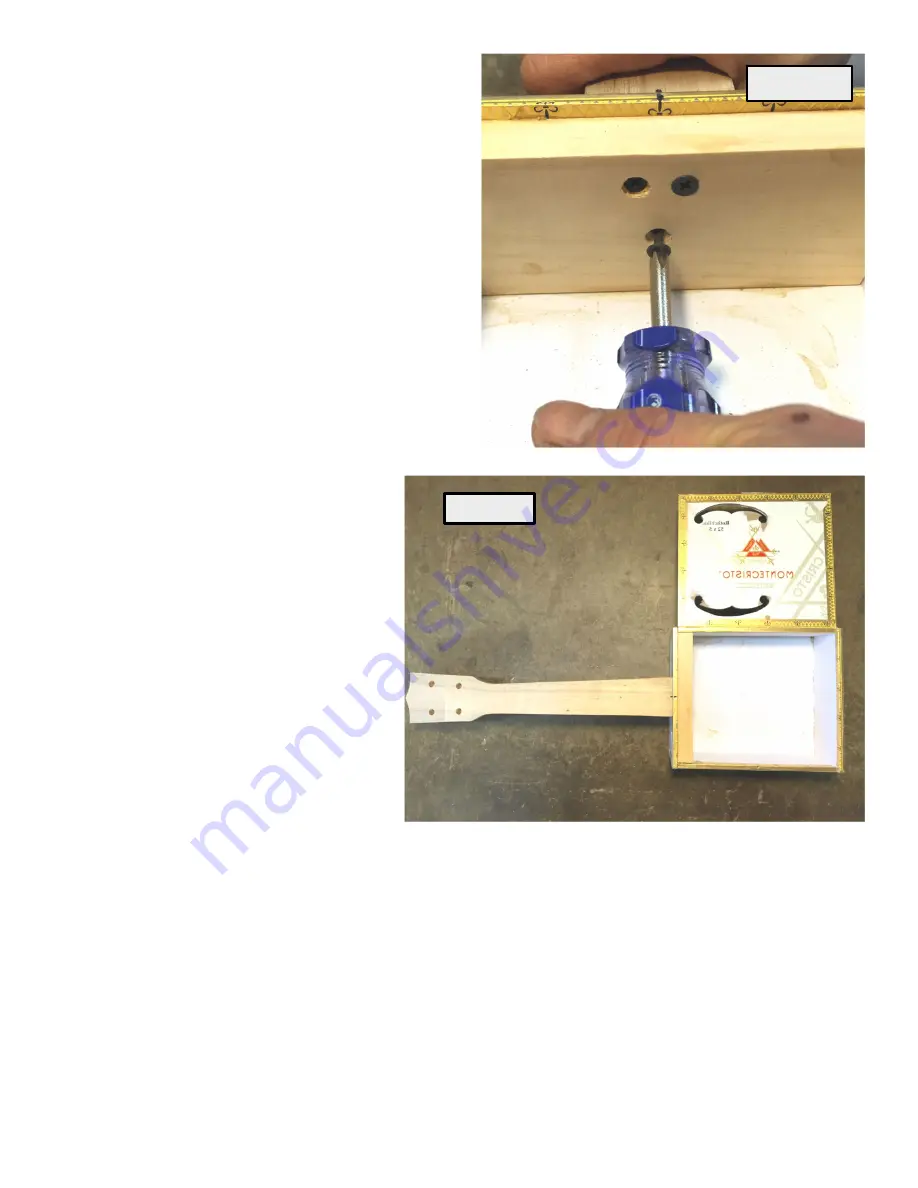
Copyright 2015 © C. B. Gi
Ʃ
y Cra
Ō
er Supply 6
board extend out over the box (which makes the instru-
ment more versatile when being played), or you can cut
off the bottom part off the fretboard so that it ends at the
box edge.
One benefit of the latter is that it lets you gain access to
the box interior after the ukulele has been built - this can
be handy if you want to install a pickup, or at least want
to leave yourself the option of doing so later.
For the purposes of this guide, we’re going to cut off the
“excess” fretboard, so it’s time to mark the fretboard to
be cut.
If you have decided to not cut the fretboard shorter, skip
this next step.
With the fretboard held in position on the
neck, turn the neck over and make a pencil mark on the
back of the fretboard (
Figure 12
). Make sure you have
allowed the 1/8” for the nut up at the top!
Once cut, your fretboard should line up evenly with the
end of the neck, as shown in
Figure 13
. Sand and
smooth the cut edge to remove any sharp points.
Step 2—Gluing on the Fretboard
Please note: if you have decided to leave your
fretboard at full length, you should not glue it
onto the neck until the neck has been mount-
ed onto the box.
Once the fretboard is glued on, you won’t be
able to open the box any more, so it is best to
wait to do this until towards the end of the as-
sembly process. The rest of these instructions
assume that the fretboard has been cut short-
er.
Once you have your fretboard cut to length, it
is time to get it glued onto the neck. Apply
wood glue to both the back of the fret board
and the top of the neck, as shown in
Figure
14
. Make sure to spread the glue around over
the entire surface—you want to make sure this
is a good, strong joint.
Line the top edge of the fretboard up with the mark you’ve made at the top of the neck. Firmly clamp the fret-
board to the neck, wiping off any excess glue that may squeeze out from between the two surfaces. Use as
many clamps as necessary to get a nice tight glue joint.
You may find it beneficial to use a scrap block of wood between the clamps and the fret board, as shown in
Figure 15
. The wood block will help to protect the fret board and will evenly apply pressure across the entire
surface while the glue dries.
Be sure to let the glue set up for as long as is recommended on the glue bottle. In the C. B. Gitty shop we use
Titebond II or III wood glue, which creates a very strong glue bond (often stronger than the wood itself), but
you can use any standard-purpose wood or carpenter’s glue with good results.
Once the glue has dried, remove the clamps and examine your handiwork. This is a good time to do any final
sanding of the neck and fretboard, smoothing of fret ends and other finishing work on the neck.
Figure 9
Figure 10
















